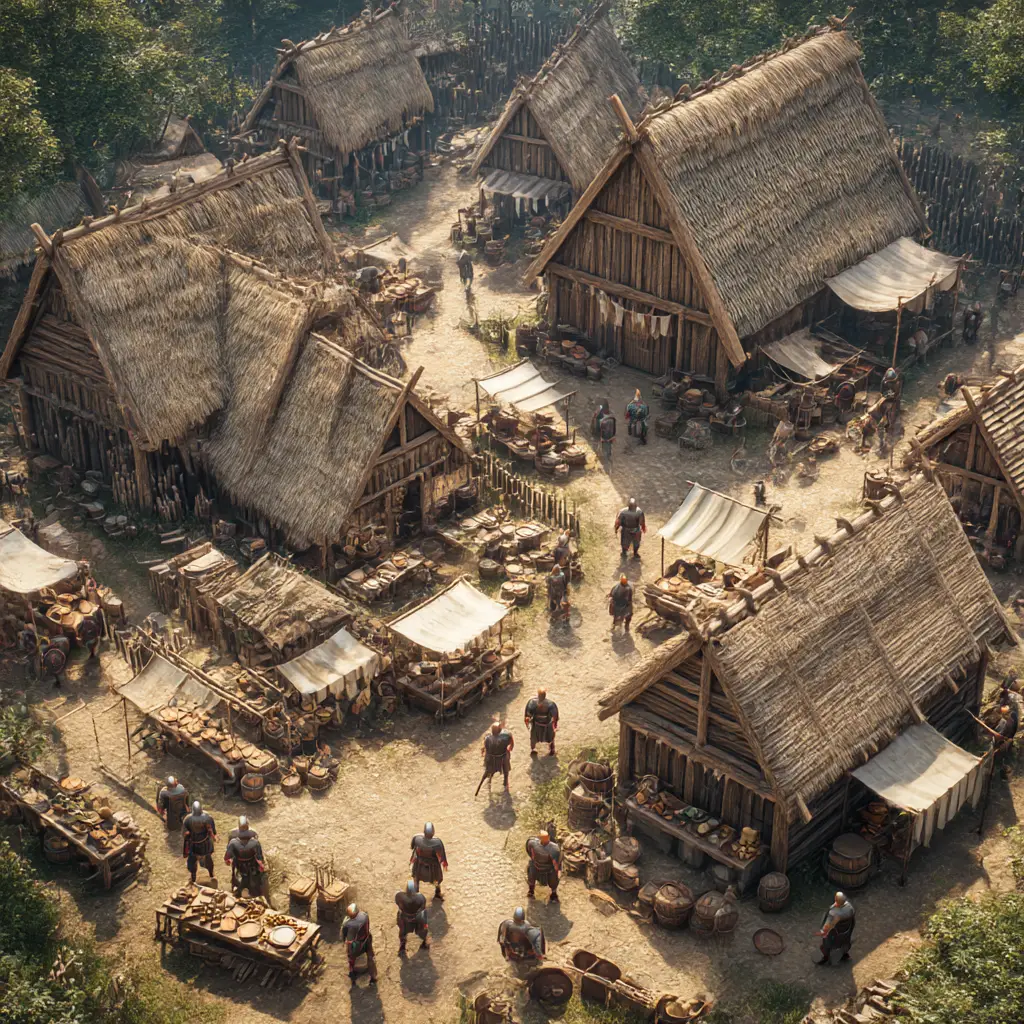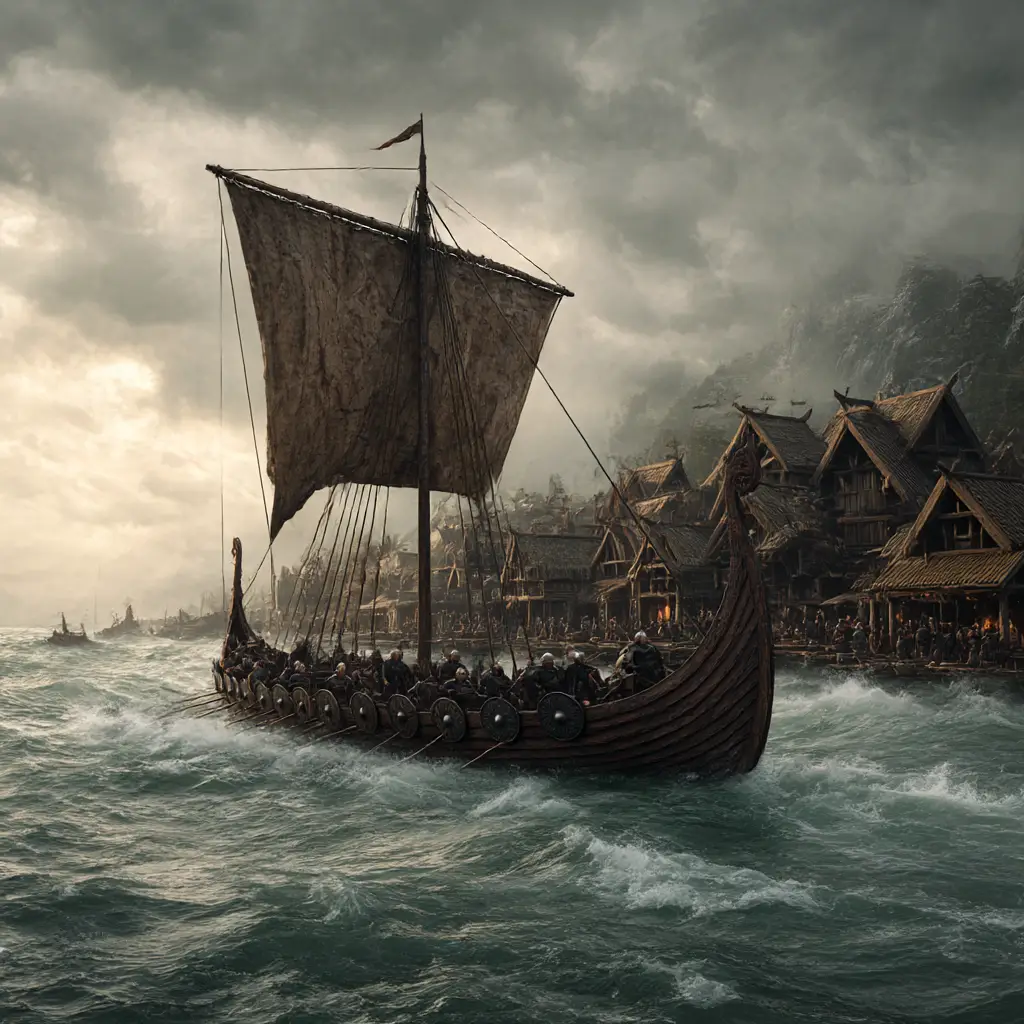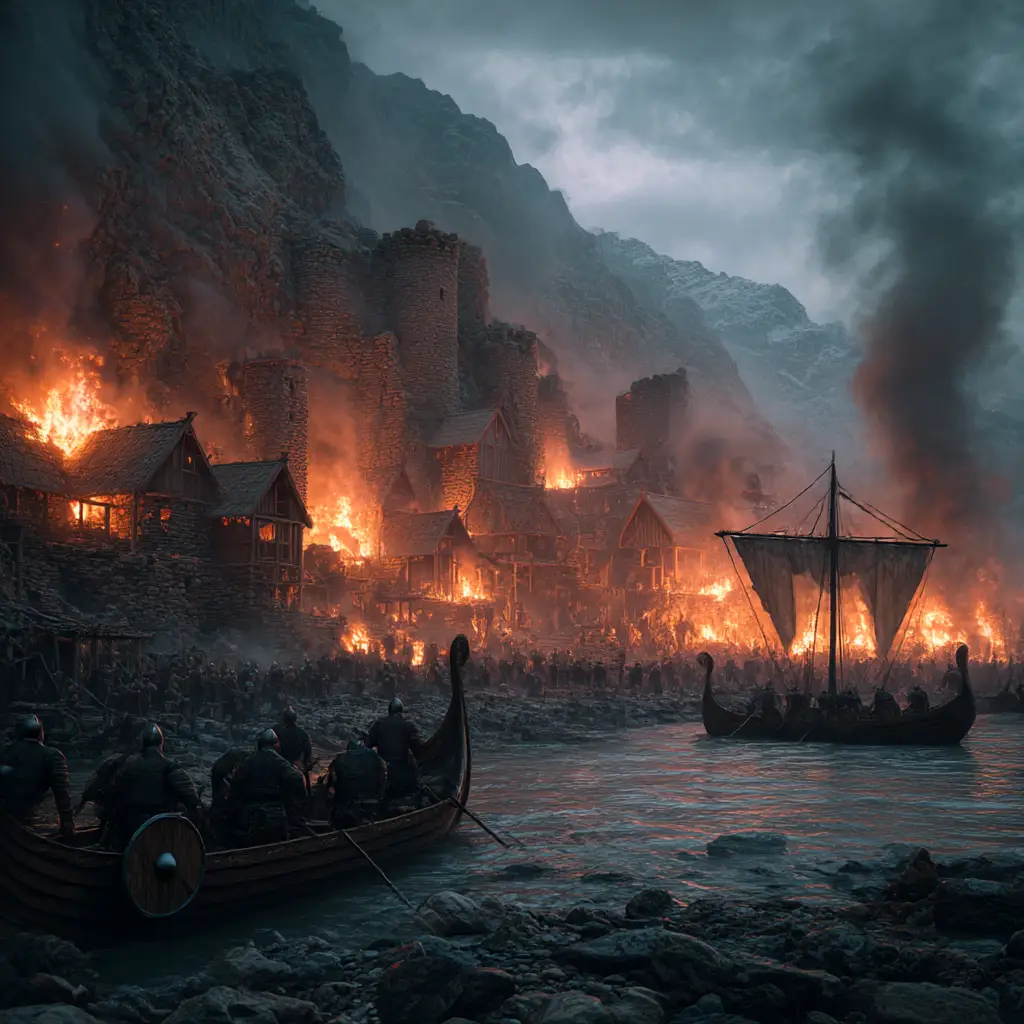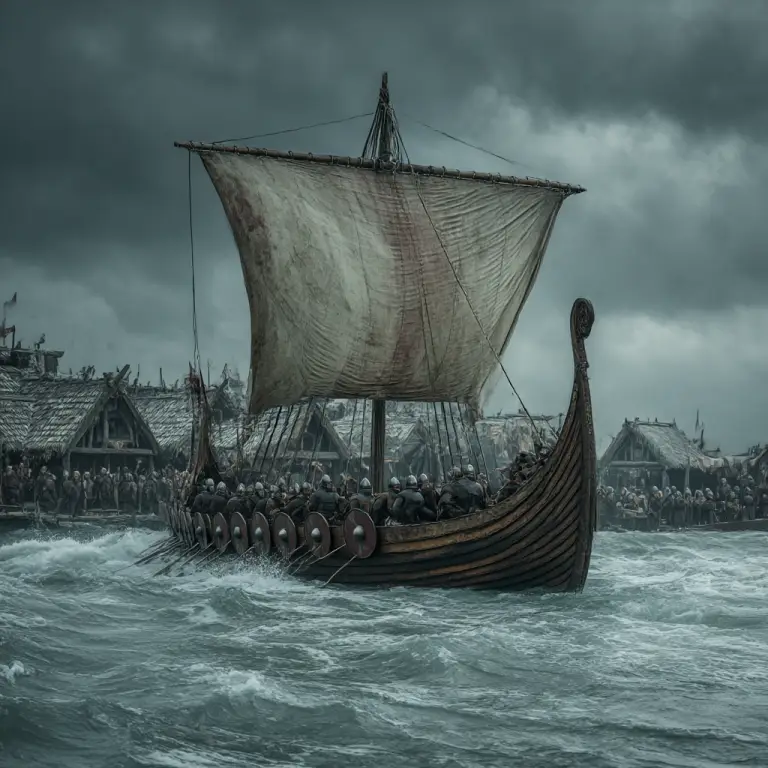ikings in France – A Historical Timeline
Early Raids – Late 8th to Early 9th Century
Viking fleets first began to appear off the coast of Francia in the closing years of the 8th century. Their swift longships allowed them to strike coastal settlements before defenders could respond. By the early 9th century, the raids grew bolder, with Vikings using rivers such as the Seine and Loire to penetrate far inland.
843 – The Sack of Nantes
One of the first large-scale attacks occurred in 843, when Nantes was stormed during a festival. Churches, monasteries, and towns were prime targets due to their stored wealth, manuscripts, and religious treasures. The brutality of these raids spread fear throughout the Frankish kingdoms.
845 – Siege of Paris
A fleet led by the Viking chieftain Ragnar is said to have sailed up the Seine and besieged Paris. King Charles the Bald paid a large tribute, known as Danegeld, to persuade the raiders to withdraw. This marked the beginning of a pattern, where Frankish rulers bought peace through payments rather than risk destruction.
Mid to Late 9th Century – Expansion of Raids
Viking fleets became a regular presence along the French rivers. They established fortified camps from which they could raid repeatedly. Rouen, Tours, Bordeaux, and other towns suffered repeated attacks. The Loire valley in particular was heavily affected.
885–886 – Great Siege of Paris
A massive Viking army laid siege to Paris once again, lasting for almost a year. Count Odo of Paris successfully resisted with determined defence, but the Vikings were eventually bought off with tribute. The siege highlighted both the resilience of the Franks and the continuing reliance on payments to secure peace.
Early 10th Century – Towards Settlement
By the early 900s, Viking leaders were shifting from seasonal raiding towards permanent settlement. Fertile land in northern France attracted them, and their presence became more structured and organised.
911 – Treaty of Saint-Clair-sur-Epte
The Frankish king Charles the Simple made an agreement with the Viking leader Rollo. In return for loyalty, military support, and conversion to Christianity, Rollo was granted land around the lower Seine. This marked the foundation of Normandy, literally the land of the Northmen.
10th–11th Century – Growth of Normandy
The descendants of Rollo consolidated their position, intermarried with the local nobility, and built a powerful duchy. They retained elements of their Norse identity while adopting Frankish language, laws, and customs. Normandy became one of the strongest regions of medieval France.
1066 – Legacy of Viking France
The most famous descendant of the Viking settlers in France was William, Duke of Normandy. In 1066 he led the Norman Conquest of England, an event that permanently changed the history of both England and France.
Cultural Legacy
The Viking presence in France transformed from violent raids to cultural assimilation. Place names across Normandy preserve traces of Old Norse. The Normans’ blend of Norse energy and Frankish organisation created a unique identity that influenced medieval politics, warfare, and culture across Europe.



